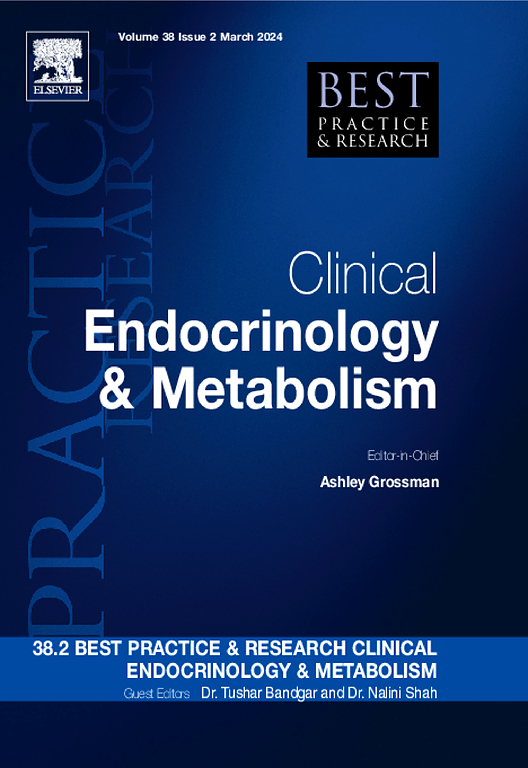Recent advances in algorithms predicting hemodynamic instability undergoing surgery for phaeochromocytoma and paraganglioma
IF 6.1
1区 医学
Q1 ENDOCRINOLOGY & METABOLISM
Best practice & research. Clinical endocrinology & metabolism
Pub Date : 2024-12-01
DOI:10.1016/j.beem.2024.101956
引用次数: 0
Abstract
Abdominal pheochromocytomas and paragangliomas (PPGLs) are characterized by the overproduction of catecholamines, which are associated with hemodynamic instability (HDI) during surgery. Therefore, perioperative management to prevent intraoperative HDI is imperative for the surgical treatment of PPGLs. Owing to the rarity and heterogeneous nature of these tumors, pre-surgical prediction of HDI is a clinical dilemma. The reported risk factors for HDI include perioperative preparation, genetic background, tumor conditions, body composition, catecholamine levels, and surgical approach. Additionally, several personalized algorithms or models including these factors have been developed. The first part of this review outlines the prediction models that include clinical features such as tumor size and location, body mass index (BMI), blood glucose level, catecholamine levels, and preoperative management with α-adrenoceptor blockade and crystal/colloid fluid. We then summarize recently reported models that consider additional factors such as genetic background, radiomics, robotic-assisted surgical approach, three-dimensional visualization, and machine-learning models. These findings suggest that a comprehensive model including risk factors is the most likely approach for achieving effective perioperative management.
用算法预测接受 phaeochromocytoma 和副神经节瘤手术的血液动力学不稳定性的最新进展。
腹部嗜铬细胞瘤和副神经节瘤(PPGLs)的特点是儿茶酚胺分泌过多,这与手术过程中的血流动力学不稳定(HDI)有关。因此,在对 PPGLs 进行手术治疗时,必须进行围手术期管理以防止术中出现 HDI。由于这些肿瘤的罕见性和异质性,术前预测 HDI 是一个临床难题。已报道的 HDI 风险因素包括围手术期准备、遗传背景、肿瘤情况、身体组成、儿茶酚胺水平和手术方式。此外,包括这些因素在内的一些个性化算法或模型也已被开发出来。本综述的第一部分概述了包括临床特征(如肿瘤大小和位置、体重指数 (BMI)、血糖水平、儿茶酚胺水平以及术前α肾上腺素受体阻滞剂和晶体/胶体液的管理)的预测模型。然后,我们总结了最近报道的模型,这些模型考虑了遗传背景、放射组学、机器人辅助手术方法、三维可视化和机器学习模型等其他因素。这些研究结果表明,包括风险因素在内的综合模型是实现有效围手术期管理的最可能方法。
本文章由计算机程序翻译,如有差异,请以英文原文为准。
求助全文
约1分钟内获得全文
求助全文
来源期刊
CiteScore
11.90
自引率
0.00%
发文量
77
审稿时长
6-12 weeks
期刊介绍:
Best Practice & Research Clinical Endocrinology & Metabolism is a serial publication that integrates the latest original research findings into evidence-based review articles. These articles aim to address key clinical issues related to diagnosis, treatment, and patient management.
Each issue adopts a problem-oriented approach, focusing on key questions and clearly outlining what is known while identifying areas for future research. Practical management strategies are described to facilitate application to individual patients. The series targets physicians in practice or training.

 求助内容:
求助内容: 应助结果提醒方式:
应助结果提醒方式:


